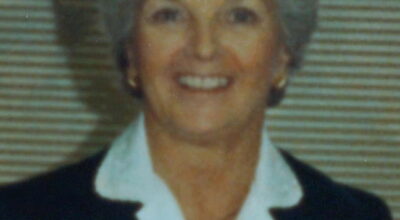OUR VIEW: Do we believe what we want to believe?
Published 10:46 am Friday, November 8, 2019
According to a new study, even those who are most social media savvy have a difficult time discerning “fake news” from reliable content.
“We all believe that we are better than the average person at detecting fake news, but that’s simply not possible,” said lead author Patricia Moravec. “The environment of social media and our own biases make us all much worse than we think.”
The study from the McCombs School of Business at The University of Texas at Austin, titled “Fake News on Social Media: People Believe What They Want to Believe When it Makes No Sense At All,” finds the average person is most likely to believe news found on social media that aligns with their political beliefs, even if it is sensational and inaccurate.
Researchers started by asking 83 social media-proficient undergraduate students 10 questions about their own political beliefs. Each participant was then attached to an EEG headset and asked to read 50 political news headlines as they would appear on a Facebook news feed. Each participant was asked to assess the credibility of the headlines they read.
UT News reports, “Forty of the headlines were evenly divided between true and false, with 10 headlines that were clearly true included as controls: ‘Trump Signs New Executive Order on Immigration’ (clearly true), ‘Nominee to Lead EPA Testifies He’ll Enforce Environmental Laws’ (true), ‘Russian Spies Present at Trump’s Inauguration — Seated on Inauguration Platform’ (false).”
The students rated each headline’s believability, credibility and truthfulness.
The study found even with a flag indicating the news could be fake, users were only able to accurately assess 44 percent of the news they were presented in the study.
According to the authors, “We found that the presence of a fake news flag triggered increased cognitive activity and users spent more time considering the headline. However, the flag had no effect on judgments about truth; flagging headlines as false did not influence users’ beliefs.
“A post hoc analysis shows that confirmation bias is pervasive, with users more likely to believe news headlines that align with their political opinions. Headlines that challenge their opinions receive little cognitive attention (i.e., they are ignored) and users are less likely to believe them.”
Political affiliation made no difference in their ability to determine what was true or false, UT News reports.
“People’s self-reported identity as Democrat or Republican didn’t influence their ability to detect fake news,” Moravec said. “And it didn’t determine how skeptical they were about what’s news and what’s not.”
The findings indicate people are most likely to believe what they want to believe — information and news that aligns with their political ideas and beliefs — even if it isn’t true.
When people are swayed by fake news, they are unable to make well-informed decisions about what’s happening in our world.
Especially as we approach a major election, social media users will begin to see more and more information that is not factual on their news feeds.
According to a Buzzfeed News report, during the last three months of the 2016 presidential campaign, the 20 top fake news stories on Facebook generated more engagement — shares, likes and comments — than the 20 top stories from real news websites.
“The fact that social media perpetuates and feeds this bias complicates people’s ability to make evidence-based decisions,” Moravec said. “But if the facts that you do have are polluted by fake news that you truly believe, then the decisions you make are going to be much worse.”
So how can we better discern fake news from real news?
FactCheck.org offers some helpful tips to spot fake news (https://youtu.be/AkwWcHekMdo):
— Consider the source: Are you familiar with the source? Is it legitimate? Has it been reliable in the past?
— Read beyond the headline: If a provocative headline drew your attention, read a little further before you decide to share it. The headline doesn’t always tell the whole story, even in a real news story.
— Check the author.
— What’s the support? Many times these bogus stories will cite official — or official-sounding — sources. But once you check into it, the information doesn’t back-up the source.
— Check the date.
— Is this some kind of joke? There is such a thing as satire. It could be funny, but it’s not news.
— Check your biases: Confirmation bias leads people to put more stock into information that confirms their beliefs and discount information that doesn’t.
The digital world — social media platforms and the Internet — has become a blessing and a curse. We have the chance to communicate and connect on a level most other generations could have only dreamed. With that ability comes a certain responsibility, though.
There are other practical ways to make sure the news you’re consuming and sharing is reliable. Think about what you are reading. Verify the source before you share it. Seek a second opinion.
As users become more aware of how to discern between reliable and unreliable news, social media platforms need to continue to do their parts to reduce the spread of inaccurate or fake news.
If both parties — users and developers — are setting their targets on eliminating fake news, we can ensure a better-informed society.
Be a responsible news-gatherer and do your research. If it seems too good (or bad) to be true, it probably is.
Editorials represent the opinion of the newspaper’s editorial board. The board is comprised of publisher Michael Caldwell and Bluegrass Newsmedia editors Whitney Leggett and Ben Kleppinger. To inquire about a meeting with the board, contact Caldwell at 759-0095.





